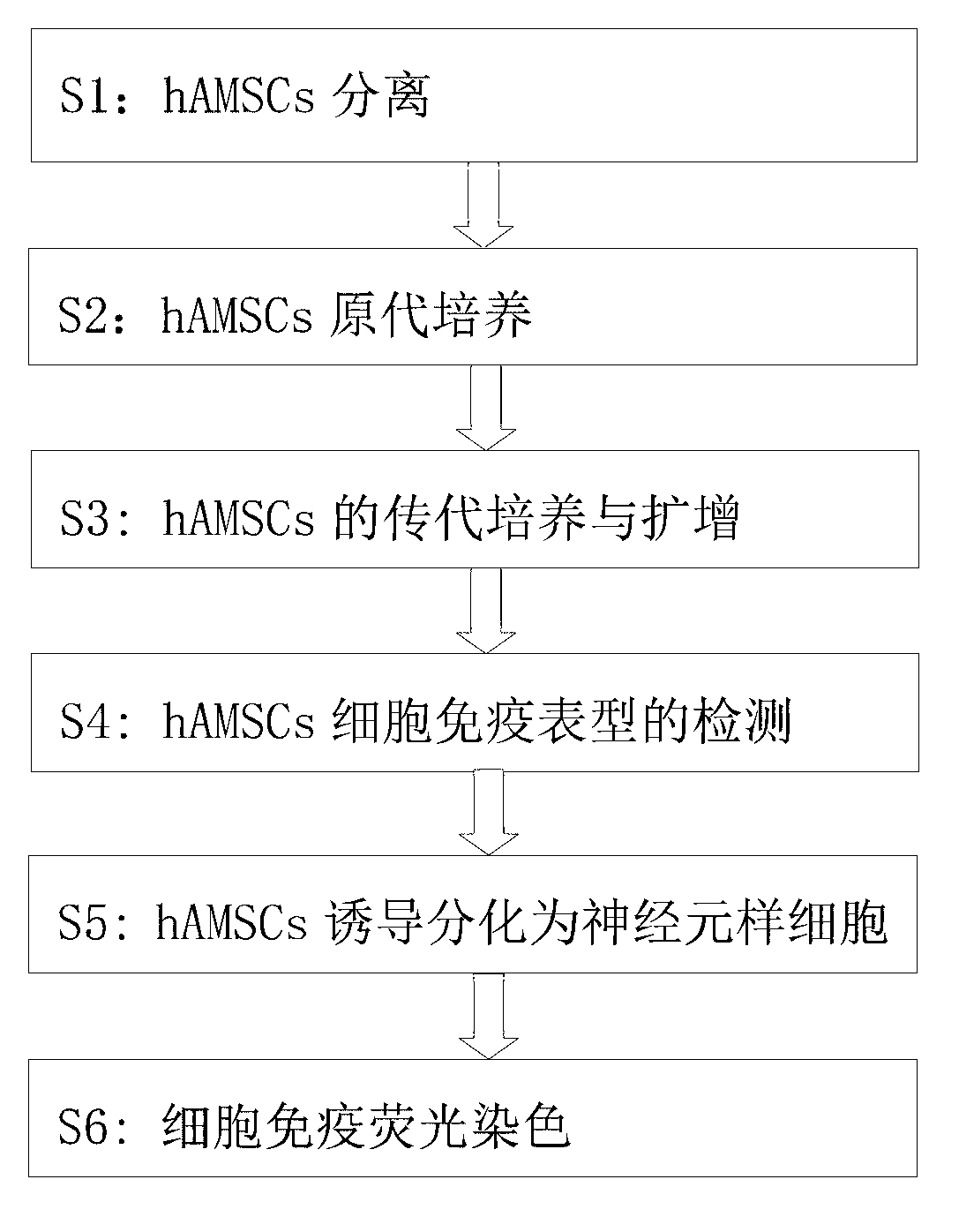Method for inducing human amniotic mesenchymal stem cells to differentiate into neuron-like cells
A technology of neuron-like cells and mesenchymal stem cells, which can be applied to animal cells, nervous system cells, vertebrate cells, etc., and can solve the problems of lack of physiological characteristics of nerve cells
- Summary
- Abstract
- Description
- Claims
- Application Information
AI Technical Summary
Problems solved by technology
Method used
Image
Examples
Embodiment Construction
[0014] Such as figure 1 Shown is a flow chart of the steps of the method for inducing human amniotic mesenchymal stem cells to differentiate into neuron-like cells of the present invention, which uses all-trans retinoic acid, basic fibroblast growth factor, and epidermal growth factor to induce human amniotic mesenchymal stem cells The method for differentiating stromal stem cells into neuron-like cells specifically comprises the following steps:
[0015] S1. Isolation of human amniotic mesenchymal stem cells (hAMSCs):
[0016] The fresh placenta discarded after delivery was taken under sterile conditions, the amniotic membrane was peeled off from the placental tissue by mechanical method, washed several times with D-Hanks solution to remove residual blood, and the rinsed amniotic membrane was cut into about 1mm with ophthalmic scissors 3 Add 2.5g / L trypsin to digest at 37°C for 10 minutes; add DMEM containing 5% calf serum to stop the digestion, and gently pipette and mix we...
PUM
 Login to View More
Login to View More Abstract
Description
Claims
Application Information
 Login to View More
Login to View More - R&D
- Intellectual Property
- Life Sciences
- Materials
- Tech Scout
- Unparalleled Data Quality
- Higher Quality Content
- 60% Fewer Hallucinations
Browse by: Latest US Patents, China's latest patents, Technical Efficacy Thesaurus, Application Domain, Technology Topic, Popular Technical Reports.
© 2025 PatSnap. All rights reserved.Legal|Privacy policy|Modern Slavery Act Transparency Statement|Sitemap|About US| Contact US: help@patsnap.com

